A few posts back it was suggested to me that I can make a tyvek stuff sack from my cook kit using US Postal Service tyvek envelopes. So, I went to the post office, grabbed a bunch, and figured I would give it a try. The only thing is, my tent was in a much bigger need for a stuff sack than my pot. Since I have removed a bunch of elements from my tent, it has been impossible to find a well fitting stuff sack.
For the project I needed a few components. Obviously I needed some tyvek envelopes from the post office. You can also buy tyvek sheets in many hardware stores if you are interested. I also got a spray bottle of 3M Hi-Strength 90 adhesive. That covered the main part of the construction. To finish it off, I also needed some parachord for a drawstring and one of those draw string closure buttons things.
I began by cutting apart the envelopes to get smooth sheets of tyvek. For this stuff sack I needed two envelopes to make the walls because the tent is relatively long. I glued the two together using a one inch overlap.
Then it was time to determine the diameter of the stuff sack. I rolled up my tent, and tried to fond a round object that would match the diameter of the rolled up tent. A cooking pot was perfect. I used it to trace out a circle on a third envelope and cut it out, leaving about an inch all around that I would fold and glue.
In order to make the walls of the stuff sack, I took the tyvek sheet, and wrapped it around the pot which I used to measure the diameter. I then marked the overlap. I trimmed the tyvek and glued it together using a one inch overlap. When gluing it, I left the side that would eventually be on the outside of the stuff sack, on the inside. That way the seems would not show when I glue the bottom piece on.
Now came the hard part-gluing the bottom portion to the walls. I started by cutting the portion of the bottom piece which I left for gluing into sections, and then folding them up.
Then, I positioned the cylinder/walls within this circle, and one piece at a time, I started gluing the tabs onto the walls. I used a roll of tape on the inside of the cylinder to provide a point against which I could put pressure while the glue set.
The next step was to create the closure. I placed the rolled up tent inside the stuff sack, and measured how high it needed to be. I marked the line, and then trimmed the walls several inches higher. I then folded over the wall all the way around twice, and glued the fold.
Once all the glue was dry, I crumpled the stuff sack. Tyvek feels like plastic, but the more you fold and crumple it, the more it starts to feel like fabric. I then inverted the stuff sack.
The last part of the project, which you also see in the above picture was to insert the draw string. I cut a small opening to the folded up area on top. I did it where the original seem connecting the two pieces is located because that is the strongest area. I then threaded the parachord through.
Above you see the end result. I am happy with the outcome. We’ll see how long it lasts. These are just my crude efforts. With some practice, I’m sure you guys can get a much more refined product.
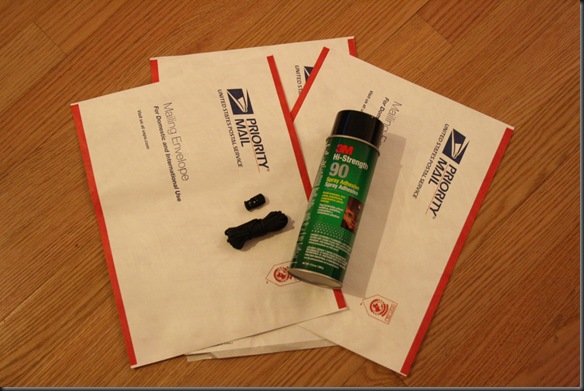

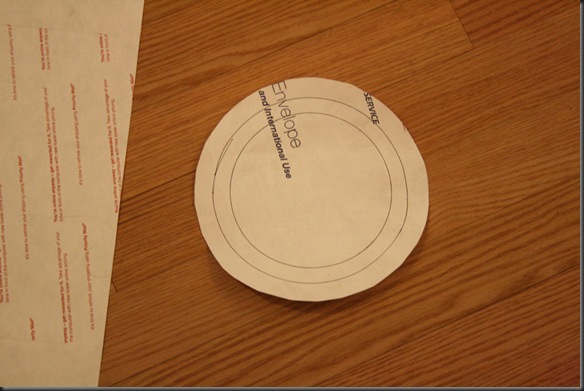
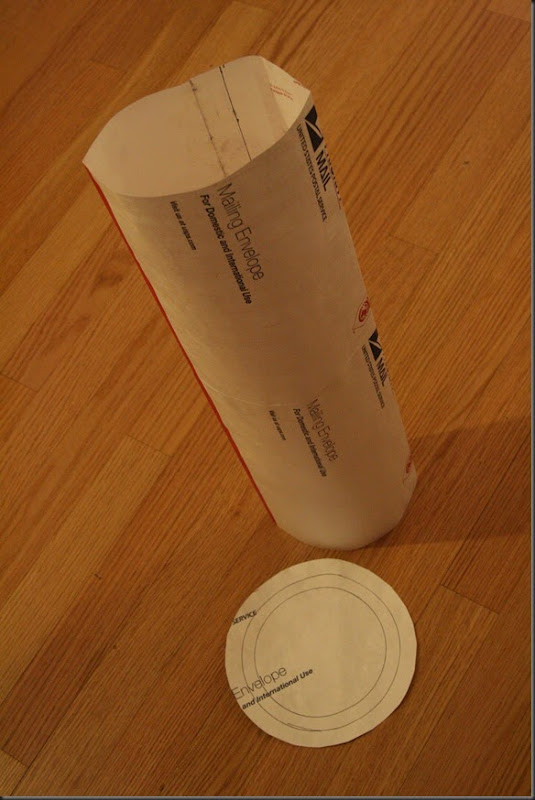
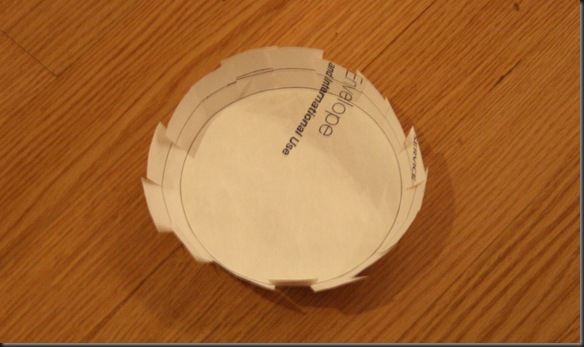
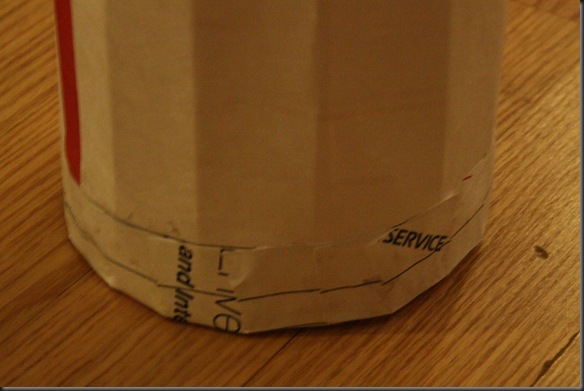
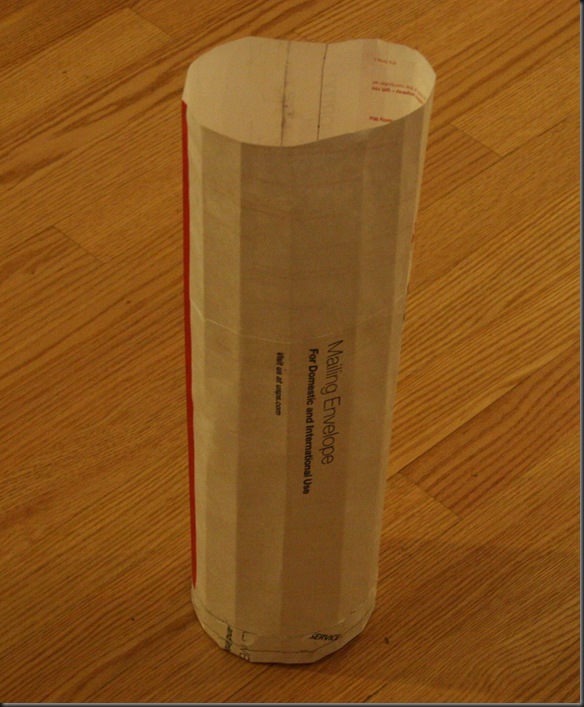
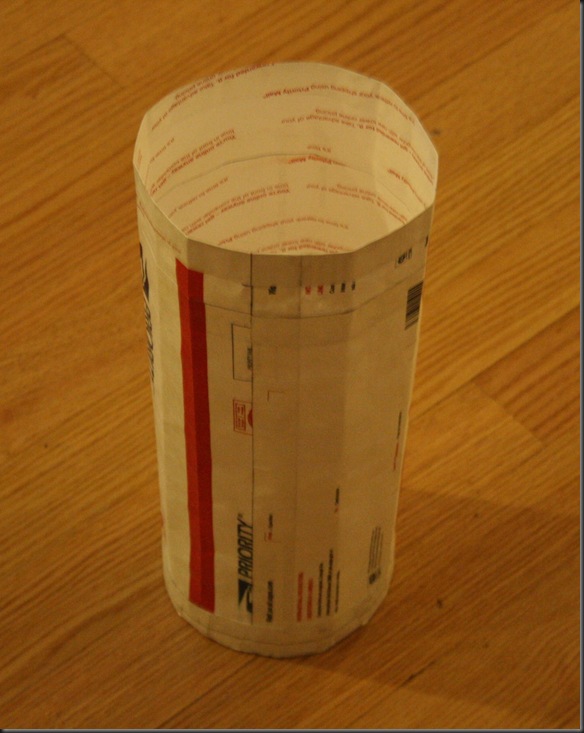
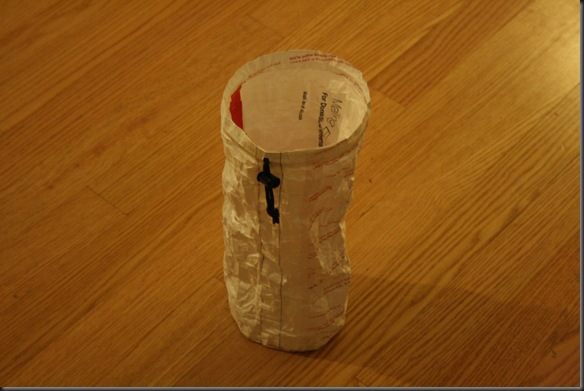
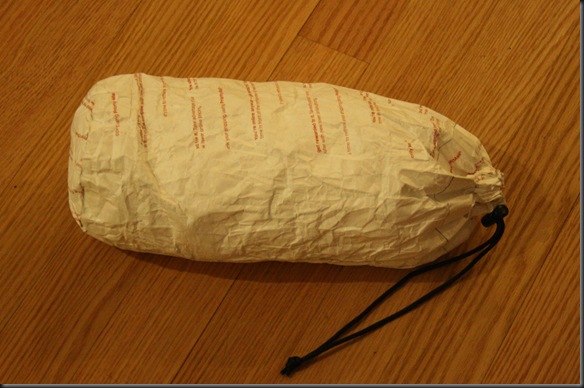
No comments:
Post a Comment